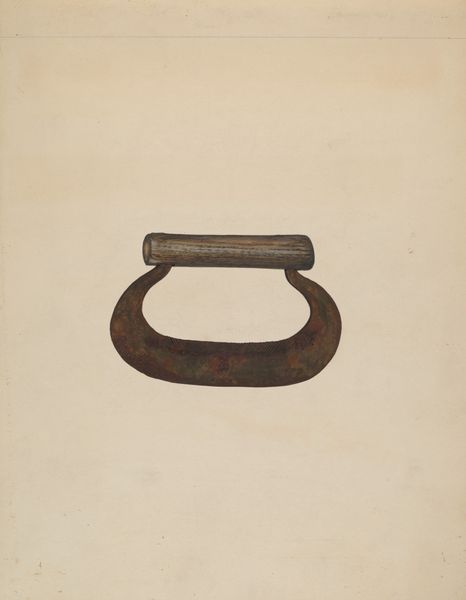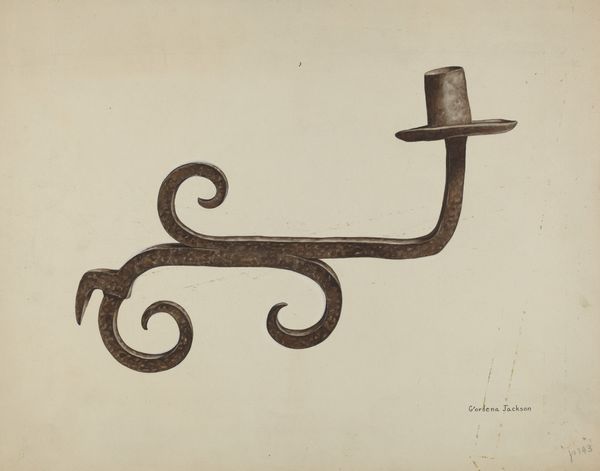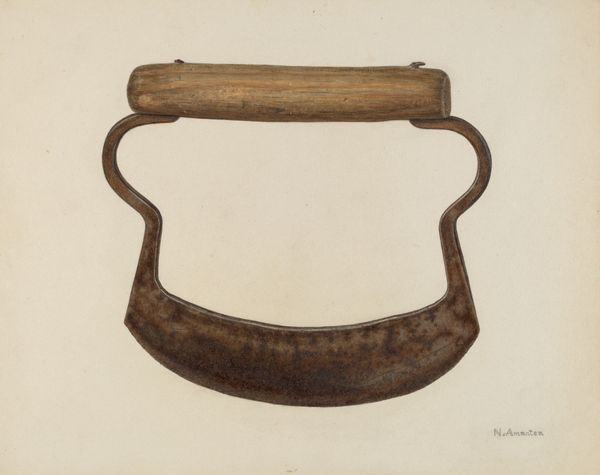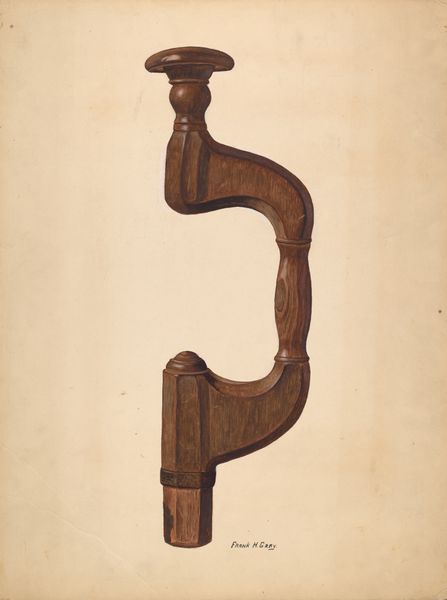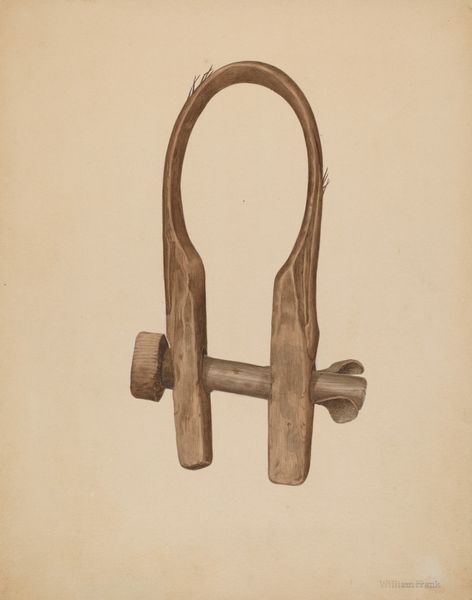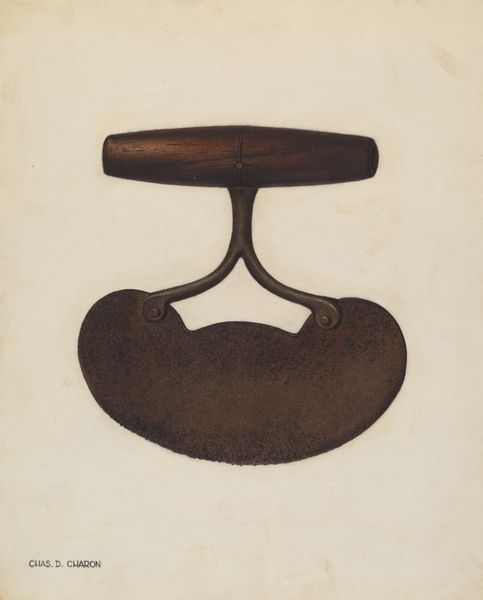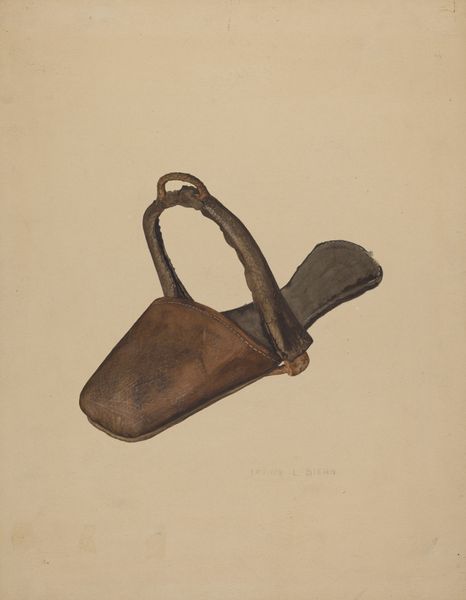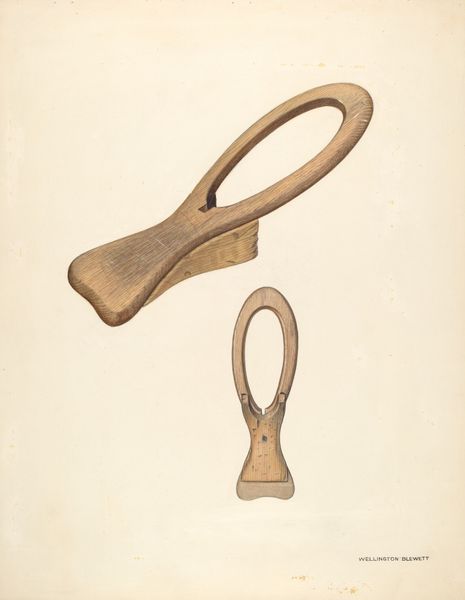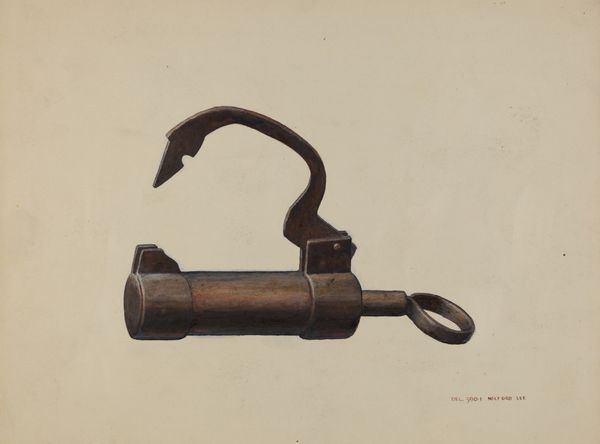
drawing, painting, paper, watercolor
#
drawing
#
toned paper
#
painting
#
appropriation
#
paper
#
watercolor
#
pencil drawing
#
geometric
#
watercolour illustration
#
modernism
#
watercolor
Dimensions: overall: 36.5 x 29 cm (14 3/8 x 11 7/16 in.) Original IAD Object: 6 3/8" wide; 6 7/8" highblade: 1/8" thick
Copyright: National Gallery of Art: CC0 1.0
Editor: This is Stanley Chin's "Chopping Knife" from around 1941, rendered in watercolor and pencil. I'm struck by the object itself; a simple, utilitarian kitchen tool, given such prominence. What historical weight might this subject matter carry? Curator: That's a keen observation. The selection of the subject itself reveals much. Think about the social context: it's 1941. America is on the brink of war, and there's a societal emphasis on the everyday, the domestic. Representing a humble object like a chopping knife elevates its significance. It makes me wonder about the intended audience and what this imagery may be intended to symbolize in times of increasing precarity. Editor: So, beyond the tool itself, the date situates it in a particular political climate? Do you think that Stanley Chin chose this object deliberately, to say something specific? Curator: Exactly. Considering that artists don't exist in a vacuum, it's interesting to consider how cultural and political events influence their artistic choices. By focusing on a simple tool related to domestic life, he may have been indirectly commenting on the looming conflict. Editor: That makes me think about how we value art in times of social and political upheaval. Almost as if in times of intense change, art acts like a form of communication to others, about the role of beauty and everyday life? Curator: Precisely! And it asks, perhaps, what stories museums want to tell during national or international unrest? I encourage you to think of who has access to these museum spaces. "Chopping Knife" might not seem overtly political, but that subtlety speaks volumes about the politics of imagery and whose experiences are rendered valuable enough for preservation. Editor: I never thought about it like that. The piece seemed unassuming initially, but you’ve highlighted the powerful implications behind what is included and what is excluded from public consumption. Curator: It demonstrates how even the simplest still life can be a commentary on the public role of art, if we contextualize it correctly. It encourages us to look critically at both the object and its display within an institution.
Comments
No comments
Be the first to comment and join the conversation on the ultimate creative platform.
